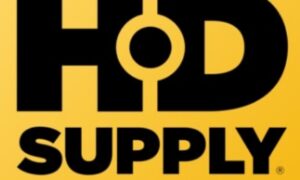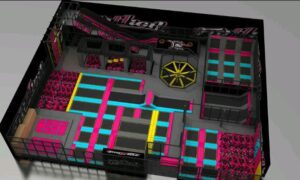Shelf performance plays a direct role in driving revenue in retail. A product that is missing from the shelf or placed in the wrong location loses visibility. If promotions are not displayed correctly, the impact of campaigns is reduced. For retailers and brands managing thousands of SKUs across hundreds of locations, gaining accurate shelf-level insights remains a challenge.
Traditional methods of shelf tracking have relied on manual audits. These are slow, expensive, and inconsistent. Over time, this has created a gap between retail strategy and store-level execution. Artificial intelligence is now being used to close that gap. AI systems bring structure, speed, and scale to what was earlier a manual task.
What Shelf Intelligence Means Today
Shelf intelligence refers to the process of collecting and analyzing data about how products are placed and maintained in retail stores. It includes monitoring availability, placement accuracy, competitor presence, display quality, and promotional compliance.
Importance of Shelf Visibility
What happens at the shelf directly influences sales. The availability and positioning of a product affect how easily it can be found and whether it is chosen over competitors. Shelf intelligence helps ensure that each product performs as intended in-store.
Brands use shelf data to identify problems with stockouts, check if planograms are being followed, track how much space they occupy, and assess the visibility of in-store campaigns.
Why Manual Shelf Audits Fall Short
For years, retailers and brands have sent field teams to check shelf conditions manually. While this provides some visibility, it comes with several limitations.
Lack of Consistency
Different people assess shelves in different ways. One person may flag a missing product. Another might ignore it. The results vary by individual and are difficult to verify.
Limited Store Coverage
A field rep can only visit a few stores in a day. This means most locations go unchecked for long periods. Brands miss opportunities to catch problems early.
Delayed Insights
Audit results often take days or weeks to compile. By the time issues are flagged, the moment to fix them has passed. This creates a lag in execution.
As assortments grow and store formats multiply, manual audits no longer offer the speed or scale required.
How AI is Used for Shelf Monitoring
Artificial intelligence, paired with image recognition, is being used to automate shelf audits. Store staff or field reps take pictures of shelf sections. AI systems analyze these images to identify products, measure shelf share, and detect compliance issues.
Key Functions of AI-Based Shelf Intelligence
- Recognizes individual SKUs using packaging and label design
- Calculates number of facings for each product
- Flags missing, misplaced, or out-of-stock items
- Compares current shelf condition with planned layouts
- Tracks competitor products and category-level presence
- Detects errors in promotional signage and execution
These systems offer structured results within seconds, helping teams take action faster.
Getting Real-Time Insights from Store Shelves
One of the main benefits of AI-based shelf monitoring is the ability to gather real-time data from multiple locations at once.
Central Access to Shelf Data
All shelf audits are stored and processed centrally. Brand teams, sales managers, and retail operations can view shelf conditions from any region or store through a dashboard.
Store-Level Trends and Exceptions
Users can filter data to see how products are performing by store, territory, or format. This makes it easier to catch patterns, such as recurring stockouts or compliance issues in specific areas.
Faster Response to In-Store Problems
When AI detects that a product is missing or placed incorrectly, teams are alerted immediately. Field teams can correct the issue during the same visit, rather than waiting for reports to be processed.
Improving On-Shelf Availability
Out-of-stock situations are common in physical retail. When a product is not on the shelf, it cannot be purchased, even if it is in the store inventory. Shelf intelligence helps reduce such cases.
Detecting Stock Gaps
AI identifies when SKUs are missing or have fewer facings than planned. This information is shared with store teams or distributors, who can restock the shelf.
Supporting Replenishment Planning
Repeated stockouts may signal supply chain problems or demand forecasting issues. Shelf data gives context to these problems and helps improve accuracy in planning.
Verifying Planogram and Display Compliance
Planograms are used to standardize how products are placed in stores. Promotions also have specific display rules. AI helps verify if these guidelines are being followed.
Planogram Checks
Shelf images are matched against approved planograms. The system highlights differences in product sequence, facing count, and placement height.
Promotional Display Audits
AI systems detect if special displays are present, filled correctly, and located in the planned zones. If signage or promotional tags are missing, this is flagged for correction.
Maintaining compliance ensures that store execution aligns with marketing and sales strategy.
Tracking Share of Shelf and Competitor Activity
Shelf intelligence is not just about internal tracking. It also helps brands understand how they compare with others in the same space.
Measuring Shelf Share
The system calculates how much space a brand occupies in a category. This is tracked over time to assess changes in performance.
Identifying Competitor Movements
Brands can see if competitors are gaining more facings, placing similar products nearby, or occupying premium shelf positions.
This information helps in negotiation, planning, and campaign targeting.
Linking Shelf Conditions to Business Performance
Data from shelf monitoring tools is not meant to stay in isolation. When combined with sales data, it can help explain what is working and what is not.
Correlating Execution with Sales
If a region has strong sales and high shelf compliance, the connection becomes clear. In contrast, low-performing areas can be examined for stockouts, missing facings, or poor display quality.
Prioritizing Store Visits
Teams can focus their efforts on stores with the biggest gaps in shelf conditions. This makes field work more effective and focused.
Monitoring Execution Over Time
Shelf intelligence platforms store historical data. Brands can compare execution quality over months or quarters, and use this to set benchmarks or incentives.
For companies aiming to improve performance with structured insights, AI-driven retail shelf analytics can deliver measurable advantages across multiple store formats and geographies.
Scaling Shelf Intelligence Across Retail Networks
One of the advantages of AI is that it does not require physical expansion to scale. Once the models are trained, they can process data from more stores without needing more auditors.
Supporting Large Product Catalogs
AI systems can recognize thousands of SKUs. This makes them suitable for complex categories with many product variants.
Fast Updates for New SKUs
New products can be added to the system quickly, so audits stay accurate during launches or packaging updates.
Regional Adaptation
The same system can support multiple languages and store formats. This allows uniform implementation across large and diverse markets.
The Future of Shelf Intelligence
As technology improves, shelf intelligence is becoming more predictive and integrated.
Predicting Shelf Gaps
Based on past data, systems can forecast which stores are likely to face out-of-stock issues or display failures. This allows preventive action.
Integration with Other Systems
Shelf intelligence can work alongside inventory software, merchandising tools, and route planning apps. This helps build an ecosystem where all data points are connected.
Continuous Shelf Monitoring
In the future, smart cameras and sensors may track shelves without needing image capture by humans. This will make shelf monitoring a live, ongoing process.
Conclusion
AI is helping retailers and brands move beyond fragmented audits to a more unified view of store execution. By providing structured, real-time insights into shelf conditions, teams are able to catch issues early, react faster, and support field operations with data instead of guesswork.
From detecting missing products to verifying display accuracy and measuring share of shelf, AI-powered retail shelf analytics plays a central role in closing the gap between planning and execution. As retail networks scale, this approach offers the consistency, visibility, and speed required to drive smarter decisions and improve in-store performance across locations.

































